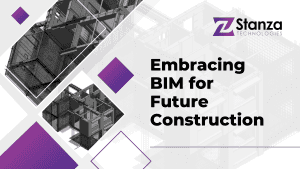Building Information Modeling (BIM) has emerged as a transformative technology in the architecture, engineering, and construction (AEC) industries, revolutionizing various aspects of project planning, design, construction, and management. While BIM’s benefits in the design and construction phases are widely recognized, its potential in facility maintenance planning is an area that merits closer attention.
Facility maintenance planning encompasses a broad spectrum of activities to ensure built assets’ ongoing functionality, safety, and efficiency over their lifecycle. Traditionally, maintenance planning relied on manual documentation, periodic inspections, and reactive interventions in response to issues. But, this approach often led to inefficiencies, increased downtime, and higher operational costs. BIM offers a paradigm shift by providing a comprehensive digital representation of building assets, enabling proactive and data-driven maintenance strategies.
Central to BIM’s role in facility maintenance planning is its ability to create and manage digital twins – virtual replicas of physical assets enriched with detailed information about their components, systems, and performance characteristics. By integrating BIM with asset management systems, facility managers can access real-time data on asset conditions, maintenance history, and operational parameters, facilitating informed decision-making and predictive maintenance planning.
One key aspect of BIM-enabled maintenance planning is asset tagging and classification. Through BIM, each building component can be tagged with unique identifiers and categorized based on function, location, and criticality. This standardized approach streamlines asset tracking, inventory management, and maintenance scheduling, ensuring that resources are allocated efficiently and maintenance tasks are prioritized based on their impact on building performance and occupant comfort.

Furthermore, BIM facilitates condition-based maintenance by enabling continuous monitoring and analysis of asset health indicators, such as equipment runtime, energy consumption, and environmental conditions. By leveraging sensor data and IoT (Internet of Things) technologies, facility managers can detect anomalies, anticipate equipment failures, and schedule preventive maintenance activities proactively, minimizing downtime and optimizing asset lifecycle costs.
BIM’s spatial visualization capabilities also play a crucial role in maintenance planning, allowing facility managers to visualize asset locations, spatial relationships, and access requirements in 3D or augmented reality (AR) environments. This immersive visualization enhances spatial awareness, improves work planning, and enables technicians to navigate complex building layouts more effectively, especially in large or complex facilities.
Moreover, BIM supports regulatory compliance by providing accurate as-built documentation and audit trails for building systems and components. Facility managers can generate compliance reports, conduct safety assessments, and demonstrate adherence to regulatory requirements more efficiently, reducing the risk of non-compliance penalties and liability issues.
In addition to operational efficiency gains, BIM-enabled maintenance planning contributes to sustainability goals by optimizing resource utilization, minimizing waste, and prolonging asset lifespan. By analyzing energy performance data and conducting life cycle assessments within BIM environments, facility managers can identify opportunities for energy conservation measures, retrofitting projects, and renewable energy integration, aligning maintenance activities with environmental stewardship objectives.
By embracing BIM technologies, facility managers can enhance operational efficiency, reduce lifecycle costs, and create healthier, more sustainable built environments for occupants and communities. As the adoption of BIM continues to grow, its role in facility maintenance planning will become increasingly indispensable in ensuring the long-term performance and resilience of built assets in the built environment.










